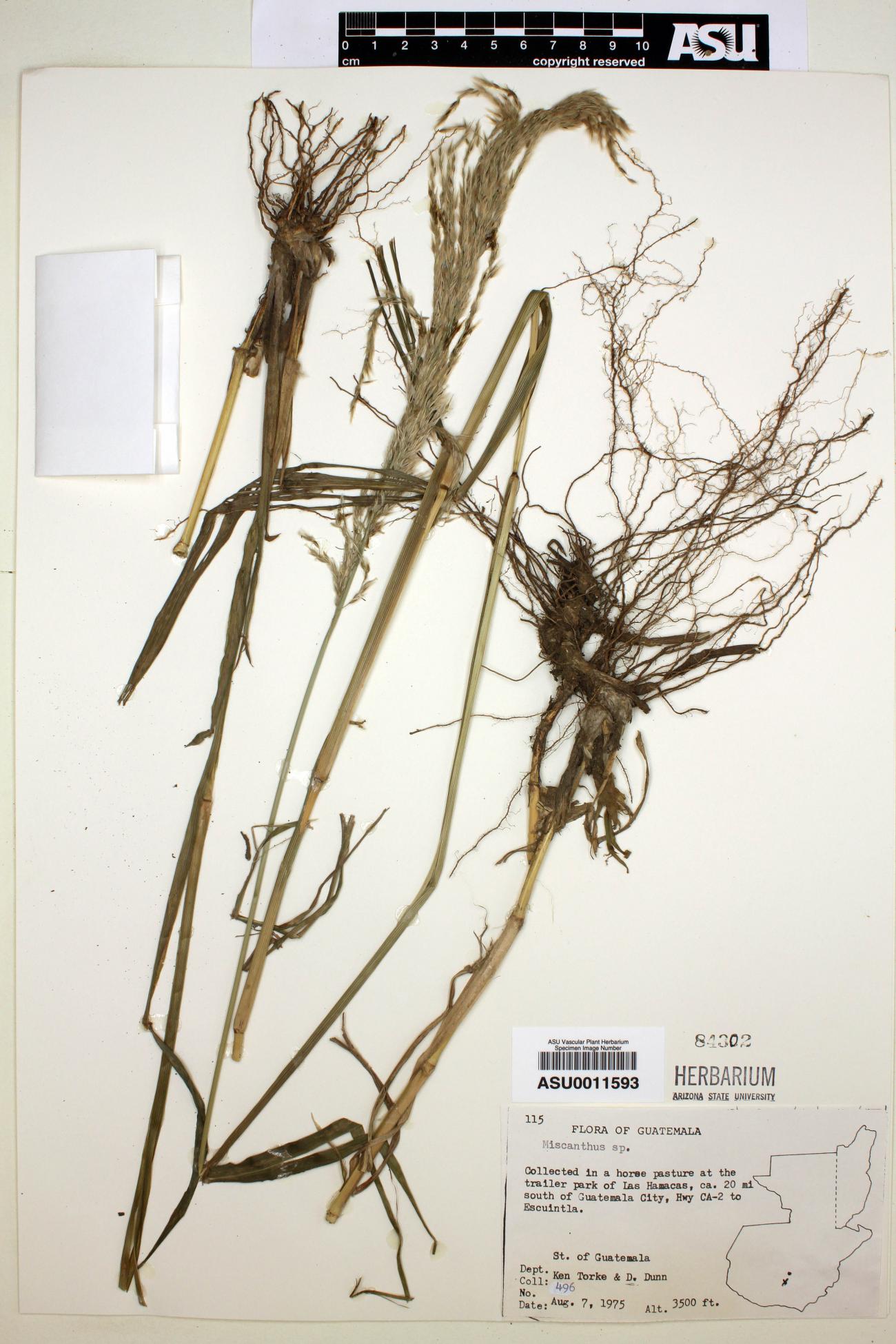Miscanthus
|
Family: Poaceae |
Plants perennial; cespitose, sometimes rhizomatous. Culms 40-400 cm, erect. Leaves not aromatic; sheaths open; ligules membranous, truncate, ciliate; blades flat. Inflorescences terminal, ovoid or corymbose panicles, with elongate rachises and numerous ascending, spikelike branches; branches usually more than 10 cm long, with unequally pedicellate spikelet pairs, spikelets homogamous and homomorphic; disarticulation below the glumes. Calluses short, blunt, pilose, with fine hairs, hairs often exceeding the spikelets. Glumes membranous to coriaceous; lower glumes broadly convex to weakly 2-keeled, without raised veins; lower florets sterile; upper florets bisexual; upper lemmas entire and unawned or bidentate and awned from the sinuses; anthers 2 or 3. Pedicels free. x = 19. Name from the Greek mischos, pedicel, and anthos, flower, both spikelets ( flowers ) being pedicellate. Spikelets all alike, one of each pair short-pediceled, the other long-pediceled, both eventually deciduous from the summit of the pedicels; rachis of the racemes continuous; glumes subequal; lemmas 2, hyaline, ciliate, shorter than the glumes, the fertile (upper) one often awned, the sterile one a little larger but awnless; tall perennials with numerous long racemes aggregated to form a silky terminal panicle. 20, warmer parts of the Old World. Gleason, Henry A. & Cronquist, Arthur J. 1991. Manual of vascular plants of northeastern United States and adjacent Canada. lxxv + 910 pp. ©The New York Botanical Garden. All rights reserved. Used by permission. |

